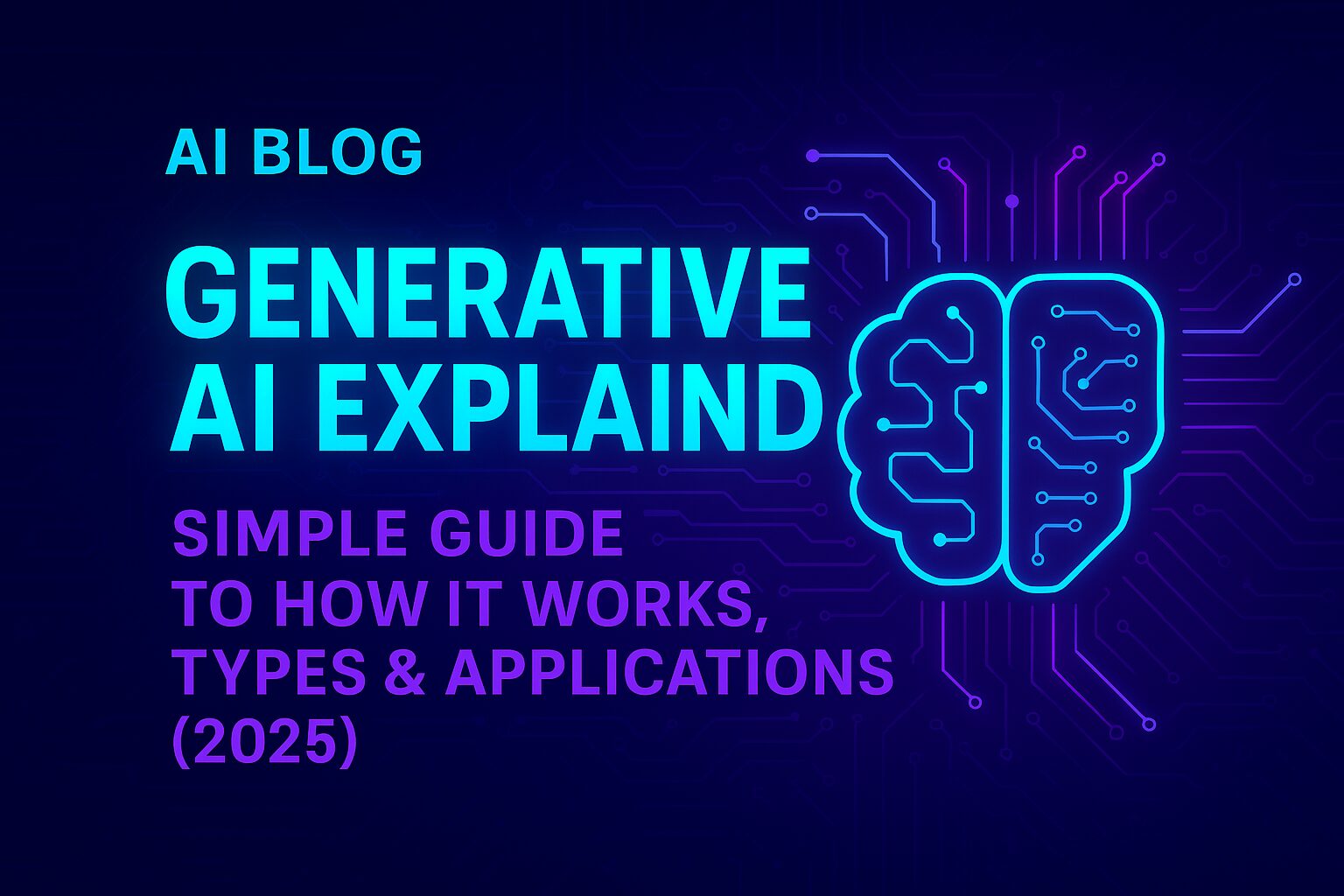Understanding Generative AI: A Simple Guide
Artificial Intelligence (AI) is changing the world rapidly, and one of the most exciting areas is Generative AI. Unlike other types of AI that might recognize patterns or make predictions based on data, Generative AI actually creates brand new things. Let’s explore what it is, how it works, the different types, and where it’s being used.
1. What is Generative AI?
- Definition: Generative AI is a type of artificial intelligence that can create new, original content.
- What it Creates: This content can be text (like stories, poems, emails), images (like photos or art), music, computer code, or even videos.
- How it Learns: It learns by studying huge amounts of existing data (e.g., thousands of pictures, millions of web pages of text).
- The Goal: After learning the patterns and styles from the data, it uses that knowledge to generate new content that is similar in style or structure but is completely original.
- Key Difference: Think of it like this: Some AI can recognize a cat in a photo. Generative AI can create a picture of a cat that has never existed before. It’s about creation, not just recognition or analysis.
2. How Does Generative AI Work?
- Step 1: Training with Data: Generative AI models are first “trained” on massive datasets. For example, an image generator might be trained on millions of images with descriptions, while a text generator might be trained on books, articles, and websites.
- Step 2: Learning Patterns: During training, the AI model learns the underlying structures, relationships, styles, and patterns within the data. It’s not just memorizing; it’s learning the rules and characteristics of the data (e.g., grammar rules for text, common shapes and colors for images). This involves complex mathematical processes.
- Step 3: Understanding the Request (Prompt): Once trained, you usually give the Generative AI a specific instruction or starting point, called a “prompt.” This could be a text description (“create an image of a blue dog flying”), a question (“write a short story about a lost robot”), or the beginning of a sentence.
- Step 4: Generating New Content: Based on its training and the prompt it receives, the AI model generates a new output. It essentially makes predictions about what should come next (the next word in a sentence, the next pixel in an image) based on the patterns it learned. It pieces together these predictions to create the final, original piece of content.
3. Types of Generative AI Models
There isn’t just one way to build Generative AI. Different approaches, or “architectures,” are used depending on the task. Here are some common types:
- Generative Adversarial Networks (GANs):
- These involve two AI models competing: a “Generator” that creates fake data and a “Discriminator” that tries to tell if the data is real or fake.
- As they compete, both get better, leading to very realistic outputs.
- Often used for creating realistic images and videos.
- Variational Autoencoders (VAEs):
- These models learn a compressed representation of the data (encoding) and then use that to reconstruct it (decoding).
- They are good at generating variations of the data they were trained on.
- Transformer Models:
- These are particularly powerful for handling sequential data like text and language.
- They use a mechanism called “attention” to weigh the importance of different words in a sentence, allowing them to understand context very well.
- Many popular large language models (LLMs) like ChatGPT are based on the Transformer architecture.
- Diffusion Models:
- These work by starting with random noise and gradually refining it over many steps, removing the noise according to learned patterns, until a clear image or data structure emerges.
- Currently very popular for generating high-quality, detailed images from text descriptions.
4. Applications of Generative AI (Where is it Used?)
Generative AI is already being used in many different fields, and new uses are appearing all the time:
- Content Creation: Writing drafts of emails, articles, marketing copy, social media posts, scripts, and even poetry.
- Art and Design: Generating unique images, illustrations, logos, and artistic styles based on text prompts. Assisting designers with creative ideas.
- Software Development: Writing code snippets, suggesting code completions, helping find bugs (debugging), and even translating code between programming languages.
- Entertainment: Creating music tracks, generating characters or environments for video games, and potentially aiding in movie special effects.
- Communication: Powering advanced chatbots and virtual assistants that can hold more natural and helpful conversations. Summarizing long texts or meetings.
- Education: Creating personalized learning materials, practice questions, or explanations for students.
- Science and Medicine: Simulating complex processes, helping design new drug molecules, or generating synthetic medical data for research without compromising patient privacy.
- Business: Automating report generation, creating personalized marketing campaigns, and simulating business scenarios.
In simple terms, Generative AI is a powerful tool that learns from the past to create something entirely new. It’s like giving computers a form of creativity, enabling them to assist humans in countless tasks that involve generating original content or ideas.
Unlock Your Creativity with Generative AI: The Power of Generative AI
Free Course by Google: Introduction to Generative AI



